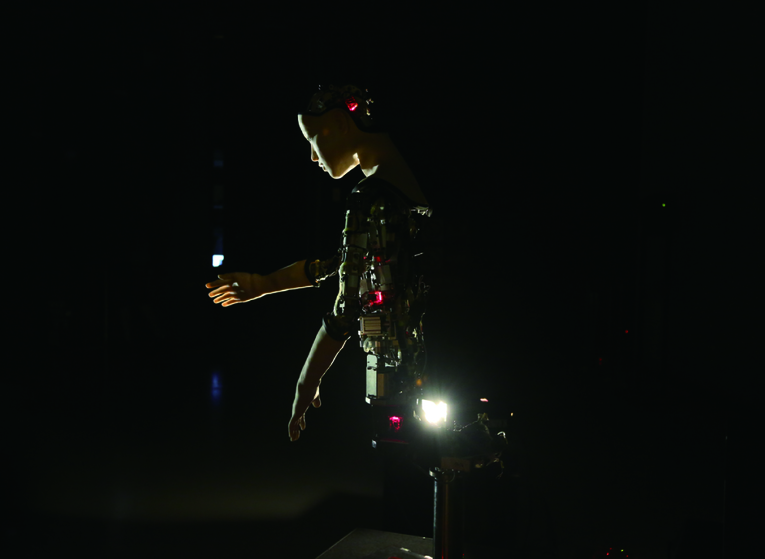20th Art Division Excellence Award
Alter
Media performance
“Alter” Production Team (ISHIGURO Hiroshi / IKEGAMI Takashi, Representatives) [Japan]
Outline
Alter is a robot endowed with “lifelike” attributes through not only its external appearance but also the complexity of its movements. It has a body composed of 42 pneumatic actuators and a face of indeterminate age and gender that “could be anyone’s.” Motion is controlled by a periodic signal generator modeled after the central pattern generators (CPG) in the spinal cord that control walking and other rhythmic movements, a neural network modeled after the neural circuitry of the human brain, and sensors placed around the robot. Actions generated by Alter’s CPG and neural network respond to data from brightness and distance sensors that monitor the robot’s surroundings, producing smooth and realistically chaotic movements. This is a work that poses the question, “Why does a machine that differs from living organisms in both its mechanisms and purpose of existence seem more lifelike at times than some organisms?”
Reason for Award
Dolls, sculptures, and robots are all manifestations of the desire of humans to replicate themselves. We call that creation, and the creative arts originate in the techniques employed to that end. The religious belief that gods made humans in their own image, and the pursuit through science of artificial intelligence and artificial life, both spring from this same desire. This work is a collaboration between Ishiguro Laboratory at Osaka University, which handled the hardware, and Ikegami Laboratory at the University of Tokyo, in charge of the software. In other words, it represents a contemporary version of human creation in which two opposite elements converge: control from the top down and creation from the bottom up. This attempt to occupy the gap between complete control and complete irregularity reached fruition in a mechanism that generates spontaneous movements in response to input from the environment. When first made public in the summer of 2016 it was labeled an experiment. This robot, which is not built to respond to people with fluid speech, is actually a regression in the sense that it rejects the android technology that has been pursued to date. And yet large numbers of visitors watched it with unflagging enthusiasm, evidence that lifelikeness and a certain weird beauty can be found in idiosyncratic behavior. That is an impressive achievement. (NAKAZAWA Hideki)



